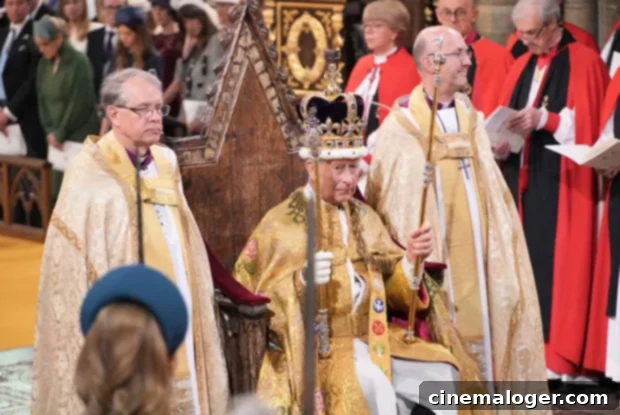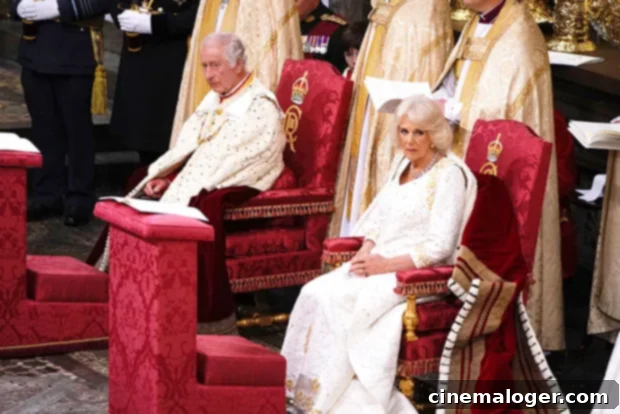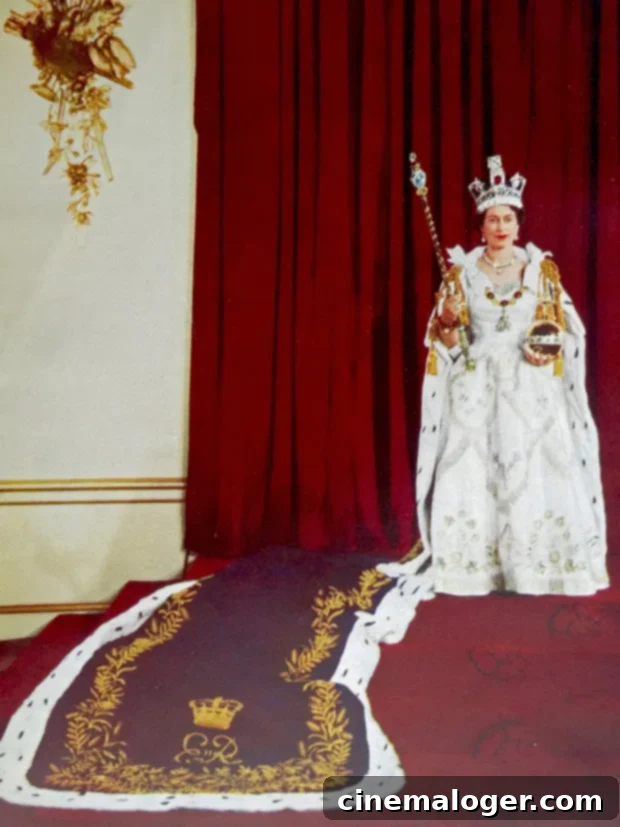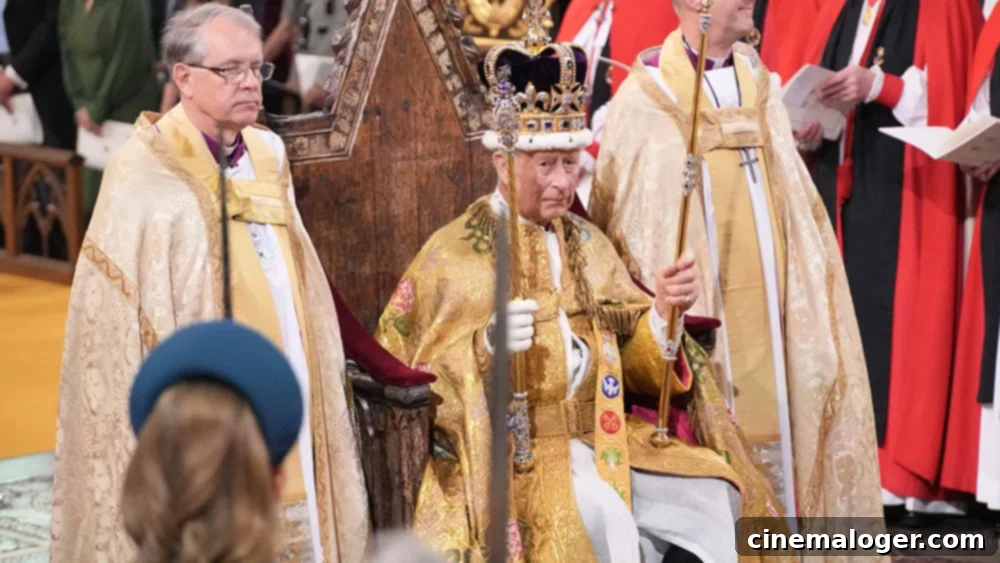King Charles III and Queen Camilla’s Historic Coronation: A New Era for the British Monarchy
A moment of profound historical significance unfolded on May 6, 2023, as King Charles III was formally crowned the King of the United Kingdom and the Commonwealth Realms. Alongside him, his beloved wife, Queen Camilla, was also officially crowned, marking a pivotal transition for the British monarchy. This grand event, steeped in centuries of tradition and pageantry, took place at the revered Westminster Abbey in London, drawing global attention and signifying the dawn of a new reign following the unparalleled 70-year tenure of Queen Elizabeth II.
While King Charles III ascended to the throne immediately upon the passing of his mother, Queen Elizabeth II, in September 2022, the coronation ceremony served as the formal and spiritual affirmation of his role as sovereign. This elaborate ritual, deeply rooted in religious and constitutional significance, cemented his commitment to serve the nation. Similarly, Queen Camilla, who had been known as Queen Consort since Elizabeth II’s death, officially received her title as Queen Camilla, a change confirmed by the formal coronation invitations dispatched in April. During the solemn ceremony, King Charles took his sacred oath, vowing to uphold his duties as monarch, followed by Queen Camilla’s equally significant crowning, solidifying their positions at the heart of the British Royal Family.

The Sacred Regalia: Crowns and Robes
The coronation ceremony is renowned for its magnificent regalia, each piece carrying immense historical and symbolic weight. King Charles III was adorned with the majestic St. Edward’s Crown, a central artifact of the Crown Jewels. This iconic crown, first fashioned for King Charles II in the 17th century, is reserved exclusively for the moment of crowning during a coronation. Its weighty gold frame, encrusted with precious stones, represents the monarch’s supreme authority and divine right. Following the crowning, Charles would typically exchange the St. Edward’s Crown for the lighter Imperial State Crown for the procession and subsequent appearances, a practice that adds another layer of tradition to the proceedings.
Queen Camilla, in her momentous crowning, wore Queen Mary’s Crown. This historic crown, originally created for King George V’s wife, Queen Mary, for her coronation in 1911, boasts over 2,000 dazzling diamonds. In preparation for the 2023 coronation, the crown underwent a significant modification: it was reset with diamonds from Queen Elizabeth II’s personal collection, including the magnificent Cullinan III, IV, and V diamonds. This adaptation not only honored the late Queen but also made Camilla the first Queen Consort since the 18th century to wear an existing crown rather than commissioning a new one, a subtle nod to modernization and sustainability within the Royal Household. The choice of this specific crown, imbued with the history of two Queens, added a poignant dimension to Camilla’s accession.

Beyond the crowns, the King also wore the Supertunica, a shimmering gold coat woven with silk thread, first created for King George V in the early 20th century. This historic vestment, weighing more than four pounds, has graced numerous past coronations, including that of Queen Elizabeth II. The Supertunica is part of a complex set of coronation robes and vestments, including the Dalmatic, Stole Royal, and Imperial Mantle, each symbolizing different aspects of the monarch’s role as a sovereign, a protector of the faith, and a dispenser of justice. These robes, some dating back hundreds of years, are integral to the pageantry, linking the current monarch to a continuous line of kings and queens, emphasizing continuity and tradition.
A Nation’s Long-Awaited Celebration
King Charles III has diligently undertaken his monarchical duties since his mother’s passing, embodying continuity and stability for the United Kingdom. Given that Queen Elizabeth II commenced her unprecedented 70-year reign at a remarkably young age, the 2023 coronation marked the first such ceremony in seven decades. This rarity transformed the May 6th event into an exceptionally momentous occasion, capturing the imagination of millions worldwide. The long interval since the last coronation meant that an entire generation had never witnessed such a grand royal spectacle, making Charles’s crowning particularly resonant for both the British public and observers across the globe.
The significance of the day was underscored by the attendance of Prince Harry, who set aside his well-documented differences with the Royal Family to support his father. Traveling from California for a brief visit to England, Harry attended the coronation amidst ongoing tensions, particularly heightened after the release of his memoir, “Spare,” in January 2023. His presence, though without an official role in the ceremony, symbolized a personal commitment to his family on this monumental day. It highlighted the complex dynamics within the Royal Family while underscoring the universal importance of the coronation to all members of the House of Windsor.
The coronation festivities extended beyond the solemn ceremony, transforming the entire weekend into a national celebration. The day began with a magnificent procession, featuring King Charles and Queen Camilla traveling in the historic Gold State Coach from Buckingham Palace to Westminster Abbey. This grand spectacle, witnessed by thousands lining the streets, blended military precision with traditional pomp. Following the coronation service, another procession returned to the Palace, allowing the public to once again cheer the newly crowned monarchs. The celebrations culminated in a star-studded Coronation Concert held on Sunday, May 7th, featuring a spectacular lineup of performers including Katy Perry, Lionel Richie, Andrea Bocelli, Sir Bryn Terfel, Take That, Freya Ridings, and Alexis Ffrench. This concert, along with nationwide “Big Lunch” events and volunteering initiatives, ensured widespread public participation and a truly memorable royal weekend.

Global Guests and Notable Absences
The Coronation Service of Their Majesties King Charles III and Queen Camilla was a truly international affair, graced by a congregation of over 2,200 distinguished guests within the hallowed walls of Westminster Abbey. This prestigious assembly included numerous members of the Royal Family, alongside international representatives from more than 200 countries, and approximately 100 Heads of State and government. Each guest received a beautifully hand-painted invitation, personally designed to reflect the historical significance and unique artistry of the occasion, shared globally via the Royal Family’s official Instagram. The diverse guest list underscored the global respect and admiration for the British monarchy, even as it navigates a changing world.
Among the notable attendees was the First Lady of the United States, Dr. Jill Biden, representing her country. However, US President Joe Biden was notably absent, though he conveyed his warm wishes and congratulations to the King. Another much-discussed absence was that of Meghan Markle, the Duchess of Sussex, who remained in America with Prince Archie and Princess Lilibet, coinciding with Prince Archie’s fourth birthday. While various reports speculated on the reasons for her decision, her absence meant that one of the most prominent members of the modern Royal Family was not present for this historic occasion, a detail that garnered considerable media attention and public discussion.
Tradition Meets the Future
The official announcement for King Charles’s coronation, released by Buckingham Palace in October 2022, explicitly stated the intention for the ceremony to “reflect the monarch’s role today and look towards the future, while being rooted in longstanding traditions and pageantry.” This statement encapsulated the delicate balance the modern monarchy seeks to strike: honoring its rich historical legacy while adapting to contemporary expectations and a changing global landscape. The ceremony, performed by the Archbishop of Canterbury, saw the official crowning of Charles with St. Edward’s Crown and Camilla with Queen Mary’s Crown, reaffirming these age-old rituals. However, elements like a more diverse congregation, a smaller guest list compared to previous coronations, and a focus on community participation in the wider celebrations highlighted efforts to make the monarchy more accessible and reflective of modern Britain.
This coronation not only formally recognized King Charles III’s reign but also set the tone for his future as monarch. His commitment to environmental causes, interfaith dialogue, and a streamlined monarchy are all indicators of how he intends to shape the institution. The blend of solemn tradition and forward-looking vision presented at the coronation signifies an evolving role for the Royal Family in the 21st century. As the United Kingdom and the Commonwealth move forward under King Charles III and Queen Camilla, the events of May 6th will undoubtedly be remembered as a defining moment—a bridge between a glorious past and a promising, albeit challenging, future for the Crown.
